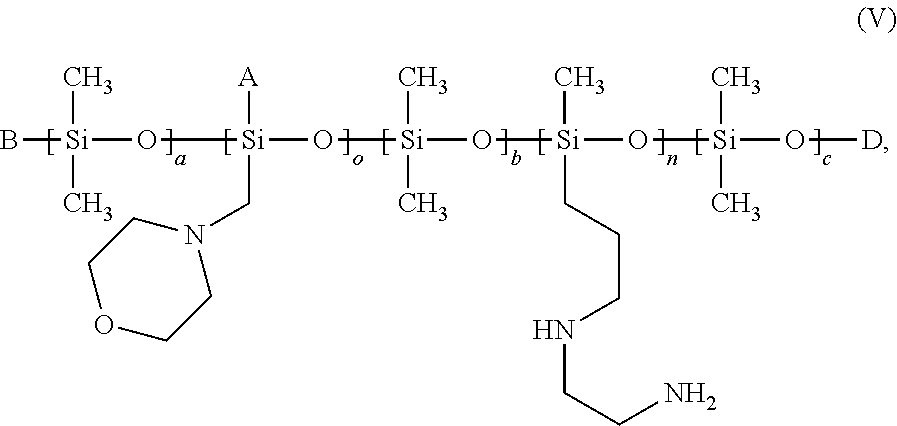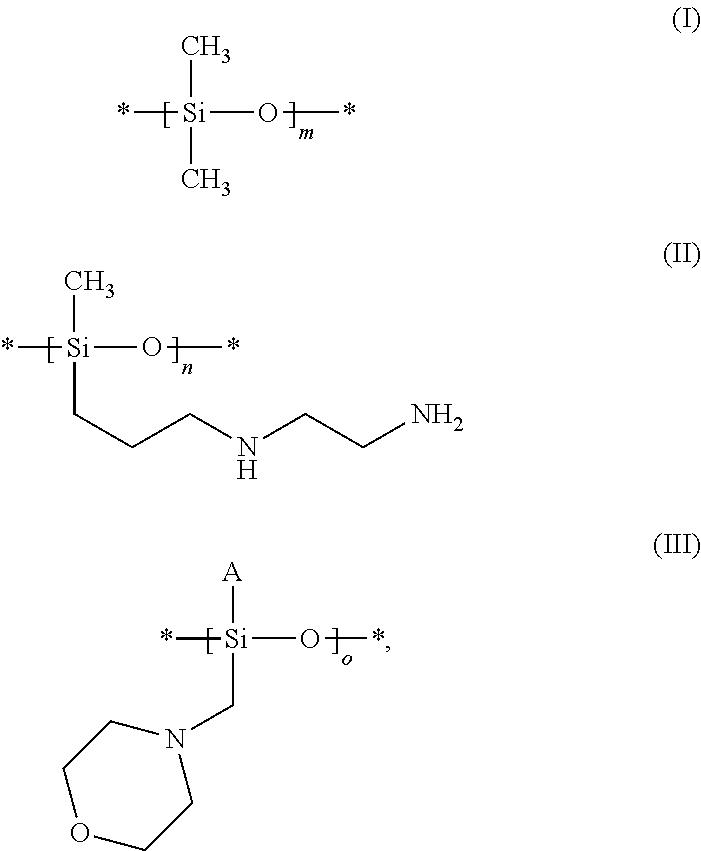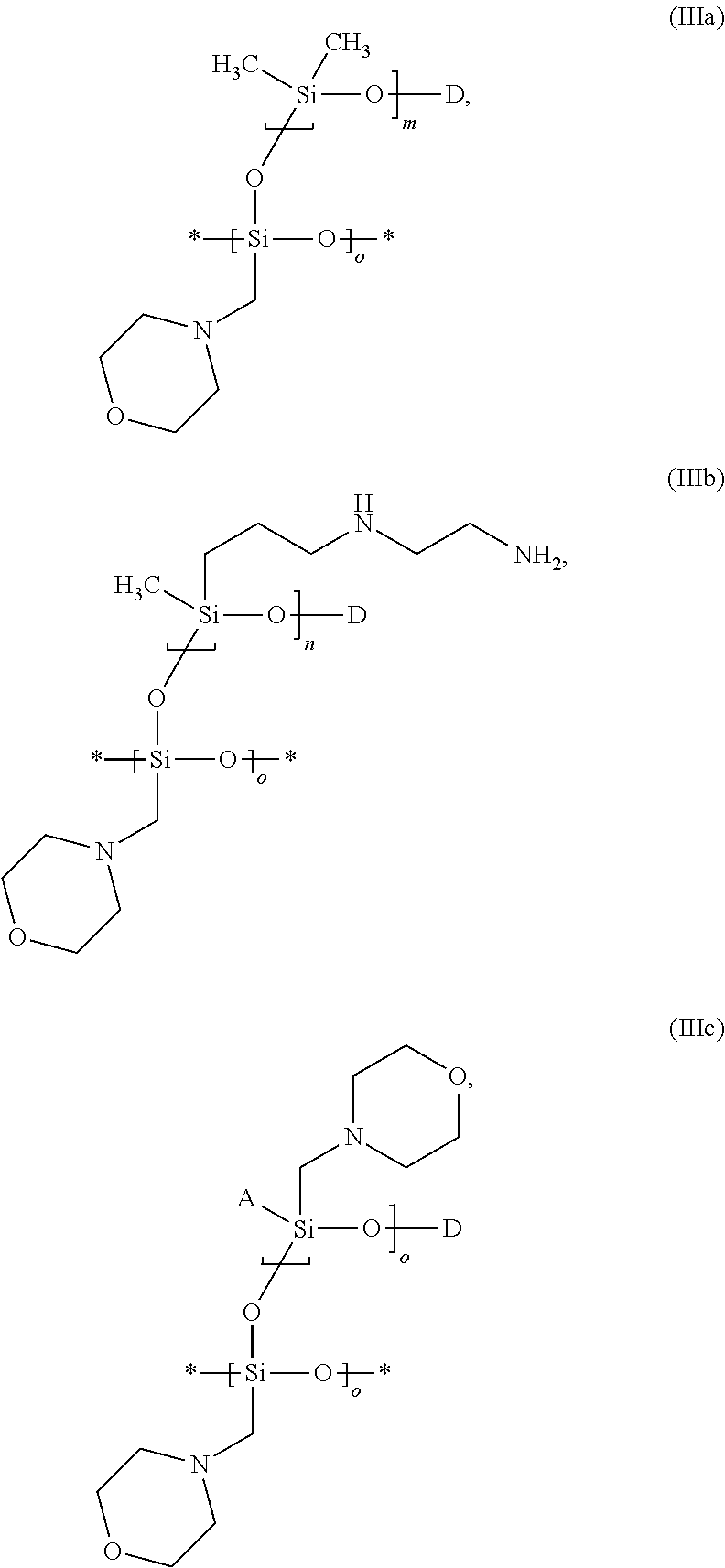Gentle hair color pretreatment with silicone and oily oxidants
a technology of silicone and oil, applied in the field of gentle hair color pretreatment with silicone and oily oxidants, can solve the problems of hair loss, hair loss, and damage to the keratinic fiber, and achieve the effects of no risk of attenuation of the effect, no risk of the present invention, and positive shelf stability
- Summary
- Abstract
- Description
- Claims
- Application Information
AI Technical Summary
Benefits of technology
Problems solved by technology
Method used
Image
Examples
example 1
[0286]Hair skeins were immersed for one minute into an aqueous emulsion of a 4-morpholinomethyl-substituted silicone of formula (V) that contained 0.01 wt % 4-morpholinomethyl-substituted silicone(s) of formula (V) and 0.005 wt % branched Trideceth-5, furthermore 0.006 wt % glycerol, and water to 100 wt %, and then blow-dried.
[0287]A freshly prepared coloring cream / oxidizing agent mixture was then applied onto the skeins and allowed to act for 30 minutes. The coloring agent was then rinsed out with water. The skeins were blow-dried for the color measurements. The combing tests were performed on damp skeins.
[0288]
TABLE 1Composition (A): color cream (quantities indicated in wt %)Toluene-2,5-Diamine Sulfate0.022-Amino-4-Hydroxyethylaminoanisole Sulfate 0.02(1-methoxy-2-amino-4-(2′-hydroxyethylamino)benzene sulfate)4-Amino-2-Hydroxytoluene0.01Cetearyl Alcohol14Glyceryl Stearate1.4Ammonium Hydroxide6.8Ceteareth-203.5Octyldodecanol1Sodium Laureth Sulfate0.51,3-Butylene glycol3.5Sodium Cet...
PUM
| Property | Measurement | Unit |
|---|---|---|
| weight-average molar mass | aaaaa | aaaaa |
| number-average size | aaaaa | aaaaa |
| temperature | aaaaa | aaaaa |
Abstract
Description
Claims
Application Information
 Login to View More
Login to View More - R&D
- Intellectual Property
- Life Sciences
- Materials
- Tech Scout
- Unparalleled Data Quality
- Higher Quality Content
- 60% Fewer Hallucinations
Browse by: Latest US Patents, China's latest patents, Technical Efficacy Thesaurus, Application Domain, Technology Topic, Popular Technical Reports.
© 2025 PatSnap. All rights reserved.Legal|Privacy policy|Modern Slavery Act Transparency Statement|Sitemap|About US| Contact US: help@patsnap.com



